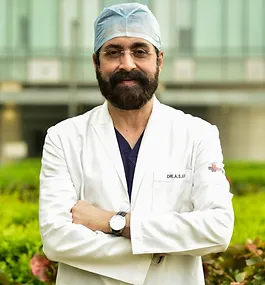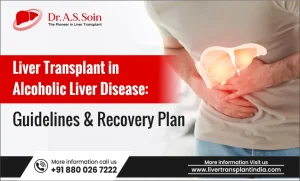A cancer diagnosis is always a life-altering moment, and when it affects a crucial organ like the liver, it brings a flood of questions and concerns. The first thought most patients and their families have is—can it be cured? While the answer depends on several factors, including the stage at which the cancer is detected and the patient’s overall health, advancements in treatment have provided many patients with hope and a fighting chance. This blog aims to break down the complexities of liver cancer and offer insights into the potential for recovery.
Table of Contents
ToggleWhat is Liver Cancer?
Liver cancer, often referred to medically as hepatic cancer, occurs when abnormal cells in the liver begin to grow uncontrollably. The liver is a vital organ that plays a crucial role in digestion and detoxification. When cancer develops in the liver, it can disrupt these functions and spread to other parts of the body.
There are primarily two categories of liver cancer:
- Primary Liver Cancer: This type starts in the liver itself. The most common form is hepatocellular carcinoma (HCC), which originates from the main liver cells (hepatocytes). There are other less common forms, including cholangiocarcinoma (cancer of the bile ducts) and hepatoblastoma (usually seen in children).
- Secondary (Metastatic) Liver Cancer: This occurs when cancer cells spread from other parts of the body to the liver. Although these cancers did not originate in the liver, they can significantly impact liver function.
The Complex Nature of Cancer and Curability
Cancer, in general, is a complex disease with no one-size-fits-all answer regarding curability. The concept of “cure” in oncology is nuanced:
- Complete Remission vs. Cure: In many cases, a patient may undergo liver cancer treatment in India and achieve complete remission, where all signs of cancer disappear. However, there is always a possibility of recurrence, which is why doctors might be cautious about using the term “cure.”
- Chronic Management: Some cancers, including certain forms of liver cancer, might be managed as chronic conditions. With regular monitoring and treatment adjustments, patients can lead long and productive lives even if the cancer is not completely eradicated.
- Early Detection and Curability: Early-stage liver cancer, when caught before it has spread, has a significantly better prognosis. Early detection often opens the door to potentially curative treatments, including surgical resection or liver transplant.
Thus, the answer to “Is cancer in the liver curable?” is not straightforward. It depends on many factors including the stage of the cancer, the overall health of the patient, and how early the cancer is detected.
Key Factors Influencing Liver Cancer Curability
The curability of liver cancer depends on several factors:
Stage of Cancer
The stage of liver cancer is one of the most critical factors in determining treatment options and outcomes:
- Early Stage: When cancer is confined to a small area of the liver, treatment options such as surgical resection (removing the tumor) or ablation (destroying the cancer cells) can be highly effective. In these cases, there is a significant possibility of achieving a cure.
- Intermediate Stage: The cancer might be larger or involve multiple areas of the liver. Liver cancer treatments in India like chemoembolization (a procedure that delivers chemotherapy directly to the liver) or radioembolization (using radioactive beads) can control the disease and extend survival.
- Advanced Stage: When liver cancer has spread beyond the liver or has invaded major blood vessels, curative treatment becomes more challenging. Systemic therapies, including targeted drugs and immunotherapies, are usually the main approaches. While these treatments may not “cure” the disease, they can prolong life and improve its quality.
Underlying Liver Function
Many patients with liver cancer also have underlying liver disease, such as cirrhosis or hepatitis, which can complicate treatment:
- Healthy Liver Tissue: If a patient’s liver is otherwise healthy, their body is better able to tolerate aggressive treatments like surgery or transplant.
- Compromised Liver Function: In patients with cirrhosis or other chronic liver diseases, the liver’s ability to regenerate after surgery is reduced. This factor plays a crucial role in determining which treatments are viable.
Tumor Characteristics
Not all liver tumors are the same. Factors like the size, number, and location of tumors are important:
- Solitary Tumors: A single, small tumor may be more amenable to surgical removal or local therapies.
- Multiple Tumors: When multiple tumors are present, the risk of spread is higher, and treatment often focuses on controlling the disease rather than complete eradication.
Patient’s Overall Health
A patient’s general health, including other medical conditions and age, influences treatment options. A robust, otherwise healthy individual might be a candidate for more aggressive treatments compared to someone with multiple health issues.
Current Treatment Options for Liver Cancer
Understanding treatment options can help clarify the question of curability.
Surgical Resection
Surgical resection (hepatectomy) involves removing the portion of the liver affected by cancer. This procedure is typically recommended for patients with early-stage cancer and sufficient healthy liver tissue.
- Curative Potential: For many patients, especially those with a single tumor and good liver function, surgery can be curative.
- Risks and Considerations: As with any surgery, risks include bleeding, infection, and complications related to liver function. The success of the surgery also depends on the cancer’s location within the liver.
Liver Transplant
A liver transplant replaces the diseased liver with a healthy one from a donor. This is considered when the cancer is confined to the liver but the liver itself is too damaged (often due to cirrhosis) to support the patient.
- Curative Potential: For selected patients, particularly those meeting certain criteria (such as the Milan criteria), a liver transplant offers a potential cure.
- Challenges: The availability of donor livers is limited, and the patient must adhere to lifelong immunosuppressive therapy to prevent organ rejection.
Locoregional Therapies
These therapies target the tumor directly while sparing the rest of the liver:
- Ablation Therapy: Techniques like radiofrequency ablation (RFA) or microwave ablation use heat to destroy cancer cells. They are often used for small tumors.
- Embolization Techniques: Transarterial chemoembolization (TACE) and radioembolization involve delivering chemotherapy or radioactive particles directly to the tumor through the blood vessels. These treatments can slow tumor growth and are typically used in intermediate-stage liver cancer.
Systemic Therapies
For advanced liver cancer, systemic treatments are often the main option:
- Targeted Therapy: Drugs such as sorafenib and lenvatinib target specific pathways that cancer cells use to grow. These medications can help slow down the progression of the disease.
- Immunotherapy: Newer treatments harness the body’s immune system to fight cancer. Immune checkpoint inhibitors are showing promise in clinical trials and are changing the outlook for advanced liver cancer.
- Combination Therapies: Often, a combination of systemic therapies with locoregional treatments is used to improve outcomes.
Radiation Therapy
Although traditionally less common due to the liver’s sensitivity to radiation, advances in precision radiation therapy have made it a viable option for some patients:
- Stereotactic Body Radiation Therapy (SBRT): This high-precision technique delivers high doses of radiation to the tumor while minimizing damage to surrounding tissues.
Emerging Treatments and Future Prospects
Research into liver cancer treatments in India is a dynamic field, and recent advancements continue to change the landscape:
Targeted Molecular Therapies
New medicines aim to target cancer cells directly, improving treatment and reducing side effects.
- Precision Medicine: By understanding the genetic mutations and pathways that drive liver cancer, researchers are developing drugs that specifically target these alterations. This approach holds promise for improving outcomes and minimizing side effects.
- Clinical Trials: Many patients have benefited from participation in clinical trials, which offer access to cutting-edge treatments that may soon become the new standard of care.
Immunotherapy
Immunotherapy uses your immune system to fight liver cancer in a smarter way.
- Harnessing the Immune System: Immunotherapy drugs have shown promise by enabling the body’s own immune system to recognize and attack cancer cells.
- Combination Strategies: Combining immunotherapy with other treatments, such as targeted therapy or locoregional approaches, is an active area of research and has led to encouraging results in some patient groups.
Advances in Diagnostic Tools
Better scans and tests help find cancer early and plan the best treatment.
- Improved Imaging Techniques: Modern imaging methods, such as contrast-enhanced ultrasound, MRI, and CT scans, allow for earlier detection and more accurate staging of liver cancer. Early diagnosis is a key factor in curability.
- Biomarkers: Researchers are working on identifying biomarkers that can predict how a patient will respond to certain treatments. This information can help tailor therapy to each individual, potentially improving outcomes.
Personalized Treatment Plans
Treatments are tailored to your specific needs, giving you the best chance for success.
- Multidisciplinary Teams: A collaborative approach involving oncologists, hepatologists, radiologists, and transplant surgeons ensures that each patient receives a personalized treatment plan.
- Genetic Profiling: By analyzing the genetic makeup of tumors, doctors can determine which therapies are most likely to be effective. This personalized approach is transforming the treatment landscape for many types of cancer, including liver cancer.
Lifestyle, Prevention, and Early Detection
While the question of curability is complex, there is no doubt that prevention and early detection are crucial in the fight against liver cancer.
Prevention Strategies
Here are some key ways to reduce the risk of liver cancer and maintain liver health:
- Vaccination: Vaccines against hepatitis B can significantly reduce the risk of developing liver cancer. Additionally, effective https://pmsd2.khm.gov.ua/ treatments for hepatitis C have improved outcomes for many patients.
- Healthy Lifestyle: Avoiding excessive alcohol consumption, maintaining a healthy weight, and adopting a balanced diet can all contribute to liver health.
- Regular Screening: For individuals at high risk—such as those with chronic hepatitis or cirrhosis—regular screening is essential. Early detection can lead to treatments that may be curative.
The Importance of Patient Education
Here’s why spreading awareness and understanding is essential for better liver health:
- Understanding Risk Factors: Knowledge about risk factors like viral hepatitis, alcohol abuse, and exposure to aflatoxins (toxins produced by certain molds) empowers patients to take proactive steps.
- Community Outreach: Health seminars, support groups, and community clinics play an important role in educating the public about liver health and cancer prevention.
Final Thought
Liver cancer is a serious condition, but treatment options are improving rapidly. With early detection, liver transplant or surgery can offer a http://www.masscomm.cus.ac.in/ complete cure. Even in cases where a cure is not possible, advanced treatments like targeted therapy, immunotherapy, and palliative care can help patients live longer and better lives.
At Dr. A.S. Soin’s clinic, we specialize in liver transplantation and advanced liver cancer treatments in India. Dr. Soin is one of India’s leading liver specialists, with vast experience in treating complex liver diseases. If you or a loved one has been diagnosed with liver cancer, do not lose hope. Book a consultation with Dr. A.S. Soin today and explore the best treatment options available. Early action can save lives.








